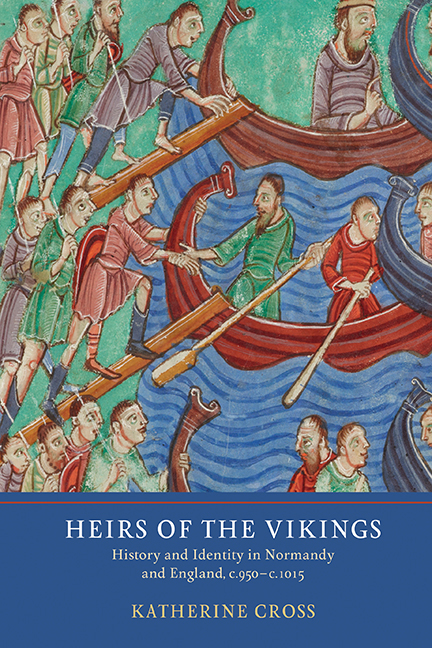Book contents
- Frontmatter
- Dedication
- Contents
- List of illustrations
- Acknowledgements
- Abbreviations
- Note on terminology
- Map
- Introduction: The Problem of Viking Identity
- 1 Genealogy: Building a Viking Age Dynasty
- 2 Origin Myths: A People for a Dynasty
- 3 Hagiography I: Ruin and Restoration
- 4 Hagiography II: Saintly Patronage
- 5 Charter Narratives: Normans, Northumbrians and Northmen
- Conclusion: Viking Age Narratives and Ethnic Identities
- Appendix 1 The Date of Fulbert's Vita Romani
- Appendix 2 The Dates of the Latin Vita Prima Sancti Neoti and the Old English Life of St Neot
- Bibliography
- Index
3 - Hagiography I: Ruin and Restoration
Published online by Cambridge University Press: 19 July 2019
- Frontmatter
- Dedication
- Contents
- List of illustrations
- Acknowledgements
- Abbreviations
- Note on terminology
- Map
- Introduction: The Problem of Viking Identity
- 1 Genealogy: Building a Viking Age Dynasty
- 2 Origin Myths: A People for a Dynasty
- 3 Hagiography I: Ruin and Restoration
- 4 Hagiography II: Saintly Patronage
- 5 Charter Narratives: Normans, Northumbrians and Northmen
- Conclusion: Viking Age Narratives and Ethnic Identities
- Appendix 1 The Date of Fulbert's Vita Romani
- Appendix 2 The Dates of the Latin Vita Prima Sancti Neoti and the Old English Life of St Neot
- Bibliography
- Index
Summary
This chapter and the next explore how inhabitants of England and Normandy in the tenth and early eleventh centuries perceived the recent viking past. During this period, historians and hagiographers looked back on the viking raids and wars which afflicted Francia and England in the ninth century, and the subsequent Scandinavian conquest and settlement of certain regions. Writers imposed their own interpretations on the earlier conflicts and, as these chapters will demonstrate, dominant narratives emerged in England and Normandy respectively. This chapter investigates the creation and dissemination of these dominant narratives, exemplified in England by two texts describing the martyrdom of St Edmund, and in Normandy by the Fécamp Chronicle, which was closely linked to Dudo's De moribus. The English vision of the viking past presented a conflict between Christian Anglo- Saxons and pagan vikings, with solely temporary effects. In Normandy, on the other hand, Christianity was seen to transform viking conquerors and unite them with local people. Investigation of earlier evidence for the cults of St Edmund in England and St Romanus in Normandy, however, suggests that the establishment of these narratives replaced alternative visions of the viking past. Rather than being witnesses to dramatically different events, the dominant narratives responded to contemporary ethnic relations in England and Normandy around the year 1000.
Furthermore, despite the different narratives that emerged either side of the Channel, these texts reflect remarkably similar contexts of literary production. Firstly, it is noteworthy that, in both regions, interpretations of the viking past predominantly emerged in hagiographical texts (the Fécamp Chronicle, as explained below, is in part a compilation of hagiographies). Framing the events described within this genre had the effect of attributing moral and supernatural significance to interactions between vikings and others. The explanation for this, however, most properly resides in the fact that, leaving aside the ‘official’ histories of the Anglo-Saxon Chronicle and Dudo's De moribus, hagiography was the primary means of literary and historical composition in the tenth and early eleventh centuries in both England and Normandy. This brings us to a second point, which is that these texts were composed in or for monastic institutions, often recently reformed, founded or refounded.
- Type
- Chapter
- Information
- Heirs of the VikingsHistory and Identity in Normandy and England, c.950–c.1015, pp. 85 - 122Publisher: Boydell & BrewerPrint publication year: 2018



